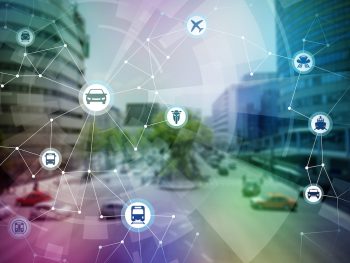Connected vehicles to identify future road collision hotspots
Data collected from connected vehicles could be used to identify road collision hotspots, before anyone is killed or seriously injured on them.

The report says there are numerous and highly valuable applications of connected vehicle data, but the issue of who pays for such data remains key
It’s just one of numerous and highly valuable applications of connected vehicle data identified in a new report that stresses the need for the issue of who pays for the use of such data to be quickly addressed.
Commissioned by the RAC Foundation and written by White Willow Consulting, the new Driven by Information Revisited study says trials are already being run where connected vehicles generate data about extreme driving manoeuvres – such as harsh braking – accurately geolocated to particular points on the road network.
This gives highway engineers the potential to look at those locations where there are early indications of emergency manoeuvres and identify the cause; which could be a hidden junction, regularly queueing traffic or even a damaged road surface.
Crucially, resources could then be targeted on maintaining the road or changing its layout before a serious crash occurs.
The report also reveals other connected data applications, including:
- In-Vehicle Signing (IVS), displaying road signs and warnings to the driver inside the vehicle;
- Green Light Optimal Speed Advisory (GLOSA), which tells drivers how to adopt driving to pass through the next traffic lights on green;
- Using eCall data from cars and vans to rapidly identify stopped and crashed vehicles from their airbag activations;
- Using vehicle-generated data to improve traffic light timings;
- Using vehicle-generated data to improve road maintenance planning; and
- Using real-time traction data to identify slippery roads in winter so they can be treated.
But the report, which is a follow-up to a 2020 study for the RAC Foundation, says questions remain on how we can sustain the services and build them at scale. Core to this is the issue of who pays for use of such data.
Steve Gooding, director of the RAC Foundation, said: “The possibilities thrown up by connected vehicles go far beyond road safety, but while many individual local authorities are exploring options it must be for government to take the lead nationally if we are ever to move beyond showcase pathfinder projects to widespread, or universal, application.
“Whilst many of the good ideas which warrant trialling may offer purely commercial opportunities, others are likely to require some public funding – if only as seed corn, or to resource key building blocks of a data architecture such as creating a comprehensive digital record of Traffic Regulation Orders that document things like speed limits.”
Report author Andy Graham added: “This isn’t just about a plea for funding – it is about the way funding could move away from a myriad of trials toward connected-vehicle data becoming a routine, integral part of improved highway management. This should include a move from funding further away autonomy to delivering better roads from better connectivity today.”
To access the report on ‘Driven by Information Revised’, click here.












